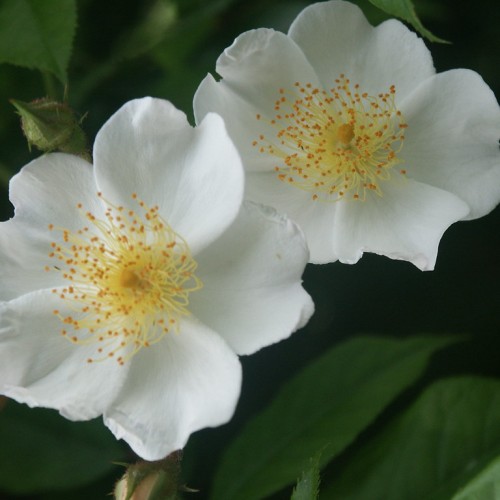
climbing polyantha rose
Rosa 'Climbing Mademoiselle Cécile Brunner'
Cycle:
Perennial
Watering:
Average
Hardiness Zone:
4 - 8
Flowers:
Flowers
Sun:
Full sun,part shade
Leaf:
Yes
Growth Rate:
Low
Maintenance:
Moderate
Drought Tolerant:
Yes
Thorny:
Yes
Care Level:
Medium
watering
It is important to water your Climbing Polyantha Rose (Rosa 'Climbing Mademoiselle Cécile Brunner') regularly to achieve beautiful blooms. Water thoroughly and deeply at least once a week, so the root zone remains moist. During hot, dry weather, increase watering frequency to 2-3 times per week. The roses should never completely dry out. Do not let the soil become soggy, however; it is best to water in the morning, so any excess water can evaporate during the day. In addition, use mulch to help reduce evaporation and conserve moisture. Lastly, check the soil near the roots before watering to make sure it is dry, and never water on the foliage.
sunlight
Climbing polyantha rose (Rosa 'Climbing Mademoiselle Cécile Brunner') prefers about 6 to 8 hours of sunlight per day. The sun should be bright but not overly intense. It is best to provide the rose with full morning sun and light afternoon shade. To prevent leaf scorch, strong direct sunlight should be avoided throughout the day.
pruning
Climbing polyantha roses should be pruned twice a year. Pruning should be done in late winter or early spring, as well as in early summer. It is important to wait until the buds swell in late winter or early spring to prune climbing polyantha roses, as pruning too early with the weather still cold may damage the buds and harm the plant. For the spring pruning, the plant should be inspected and dead, dead-heading, or any diseased or damaged stems should be removed. Old wood can also be cut off if desired. The polyantha rose should then be pruned to the desired shape and height. In early summer, the rose can be pruned back lightly to encourage the growth of new shoots. If unruly stems are taking over the shape of the plant, they should be trimmed back more aggressively. It is best to avoid hard pruning in the summer, as this can cause decreased blooming for the following season.
